Ukama is a decentralized, open source cellular-data network that you can deploy and control yourself. To get started with Ukama, all you need is electrical power and an Internet connection. It is a complete solution that includes SIMs (and support for eSIMs), a cellular base station, distributed and embedded cellular Core, a management console, and cloud services. Ukama makes cellular Internet accessible to everyone - whether you are looking for free, faster streaming on your smartphone at home, bringing cellular data connectivity to a rural area for the first time, or rolling out a secure industrial IoT network.
Within the coverage area of your own Ukama network, your data is always free and private. When you’re outside that area, you seamlessly have access to global data roaming coverage from existing tier-1 operators using Ukama SIM cards and eSIMs.
Citizens Broadband Radio Service (CBRS) is a band of radio spectrum (LTE band 48, covering 3.55 - 3.70 GHz) in the United States that was recently (2015) opened up by the FCC for unlicensed users to develop their own private networks. Today, nearly all new smartphones support CBRS. Ukama is the first cellular network using CBRS (and many other bands) that anyone can set up and run themselves, and it’s less expensive than many smartphones.
While Ukama’s CBRS compatibility certainly gives smartphones a boost, it also opens the door for a new generation of IoT devices based on private cellular networks that are faster, more efficient, and cover a wider area than Wi-Fi. With Ukama, anyone can develop and deploy their own cellular IoT network that is 100% under their control.
Existing cellular data networks are expensive, provide unreliable indoor coverage, and usually lack service where it’s needed most. With Ukama’s embedded, decentralized core, you can keep your data on premises so it remains private and can be processed (and reacted to) in real time. Ukama networks enable applications as varied as autonomous tractors, construction sites, manufacturing lines, warehouses, hospitals, and ports.
Ukama is designed to allow anyone, anywhere to run their own cellular data network. You can build a network for your home, your apartment complex, your neighborhood, your local community, or even your entire town. Ukama also provides a billing mechanism, so you can administer your network as a nonprofit or as a commercial service. There are many ways to take part in building the next stage of cellular network evolution with Ukama, from administering data plans and reselling SIMs, to setting up a home installation that federates with your neighbors, to deploying cell towers across large areas. Want to become your own MVNO? With Ukama, you can. We designed Ukama as a decentralized, bottom-up network. As more people deploy Ukama, their networks will start connecting with each another, both directly and over the Internet, to form a network of networks that expands over time.
For any device with a SIM card, like phones, many tablets, and some laptops, Ukama is a good replacement for Wi-Fi. However, just like Wi-Fi, Ukama needs a wired connection to the Internet, which for homes comes from Internet service provides (ISPs), like Comcast in the United States. However, unlike Wi-Fi, you can formally share and, critically, share the cost of your Ukama network with your neighbors. Sure, you can give your neighbor the password to your Wi-Fi network, but there’s no good way to prevent them from hogging all the bandwidth or for them to pay for their share based on usage. In contrast, such resource and cost sharing is built into Ukama’s foundations. (See the Ukama Empowerment Package if you are interested in running a network like this.)
One of the primary differences between an ISP and a cellular telephone company is SIMs. Currently, any device that has a SIM card (or eSIM) needs to be connected to one of the huge telcos, like AT&T or T-Mobile. In a way, telcos are worse than ISPs - their service is just as bad and they charge you a monthly fee for every device, not just every household. With Ukama, you can use all of your SIM devices (and even equip other devices with cellular adapters that take SIMs) without being tied to a big telco - you are the telco, albeit one that relies on your ISP for the backend connection to the rest of the Internet. (Of course, some applications of private cellular data networks don’t require a connection to the Internet - they run entirely locally - in which case you wouldn’t even need an ISP.)
It’s easy to think of the Internet and cellular data networks as different ways to access the same sites and services. Yet, an important difference between the two is that anyone can build out their own corner of the Internet, whereas only huge telcos can build out any part of the cellular data network. Ukama is trying to change this. In essence, Ukama is the first step toward a distributed cellular network, one that is patched together from other smaller networks as those networks grow and overlap, just like the Internet was developed.
All Ukama nodes support low-power operation, consuming as little power as an average laptop, and are specifically designed to run off solar power. As a result, you can deploy them in rural areas or for other offgrid applications.
We’ve developed five pieces of open hardware for running 4G/LTE cellular data networks to meet a variety of needs. Whether you barely know how to use your smartphone, or you’re a seasoned RF engineer, we have something for you. Unlike most cellular hardware, Ukama’s isn’t just rebranded versions of a large company’s products. We developed Ukama Tower Node, Ukama Amplifier Unit, Ukama TRX Module, and Ukama Mini PCIe Expansion Module from scratch and they are all manufactured in the United States. In fact, being manufactured in the US is a requirement of the USTDA grant we received.
Ukama Tower Node is a 4G/LTE cellular base-station meant for outdoor use across a large area with many connected devices.
Ukama Amplifier Unit is a 4G/5G signal booster designed for use with Ukama Tower Node. A typical MIMO 2x2 configuration will have one Ukama Tower Node connected to two Ukama Amplifier Units.
RF ports connecting Ukama Amplifier Unit to Ukama Tower Node
Ukama TRX Module is the radio access network (RAN) used in Ukama Tower Node. It is not available on its own.
Ukama Mini PCIe Expansion Module adds two Mini PCIe slots to Ukama Tower Node. The Ukama Tower Node enclosure accommodates the expansion module and exposes two SMA antennas (Ant-1 and Ant-2).
| RF | Tower Node | Amplifier Unit |
| Max active devices | 128 | N/A |
| RF connectors | 7 x SMA | 3 x SMA |
| Possible LTE bands | Any | 1-4, 30, 38, 40-43, 48-49 |
| L1-L3 LTE stack | Closed binary | N/A |
| Embedded core | Yes | N/A |
| GPS module | Yes | - |
| Processing | Tower Node | Amplifier Unit |
| Primary processor | 1.6 GHz MIPS quad-core | 500 MHz ARM single-core |
| Secondary GPP | Intel quad-core 1.9 GHz | - |
| Storage | 32 GB | 2 GB |
| RAM | 2 GB | 128 MB |
| Networking | Tower Node | Amplifier Unit |
| Ethernet speed | 1 Gbps | 100 Mbps |
| Ethernet switch | 1 Gbps | - |
| Power | Tower Node | Amplifier Unit |
| Input | PoE+ (71 W) | PoE |
| Consumption | < 45 W | < 20 W |
| Cooling | Passive heat sinks | Passive heat sinks |
| Expandability | Tower Node | Amplifier Unit |
| Mask module slot | Yes | - |
| Debug port | - | - |
| Mechanical | Tower Node | Amplifier Unit |
| Material | 6061 aluminum alloy | 6061 aluminum alloy |
| Ruggedness | Outdoor (IP65) | Outdoor (IP65) |
| Temperature rating | -40°C to +55°C | -40°C to +55°C |
| Dimensions | 6.1" x 8.4" x 3.0" | 4.6" x 9.4" x 4.0" |
| Weight | 4.5 lbs | 3.2 lbs |
| Software | Tower Node | Amplifier Unit |
| Bootloader | uboot & coreboot | at91-bootstrap & uboot |
| Linux distro | UkamaOS | UkamaOS |
| Cloud service | Yes | Yes |
Your Ukama node can be managed locally through a REST API, or via Ukama’s cloud management services, the community version of which will always be free. An enterprise version of Ukama’s cloud management services will be available in the future. Because everything is open source, you can even extend the management tools to suit your own specific applications.
| Ukama | existing SoC-based | SDR-based | |
|---|---|---|---|
| Open hardware | Yes | No | Yes |
| Modular | Yes | No | Yes |
| GPP included | Yes | No | Yes |
| RF front-end | Yes (modular) | Yes (non-modular) | No |
| LTE stack (L1-L3) | Runs on SoC | Runs on SoC | Runs on GPP, licensing options available |
| Evolved Packet Core (EPC) | Embedded | Additional hardware required | Runs on GPP |
| Distributed core | Yes | No | No |
| Managed service available | Yes | No | No |
| Ease of use | High | Moderate | Low |
| Global eSIM/SIM roaming | Yes | No | No |
| Indoor/outdoor | Both | Both | Indoor only |
| Power consumption | Low | Low to medium | Medium to high |
| Price | $ | $$ | $$$ |
We’re excited to participate in a United States Trade And Development Agency (USTDA) feasibility study to expand rural Internet connecitivity for half a million people in rural Africa by deploying decentralized cellular data networks. Under the auspices of USTDA’s Access Africa initiative, Ukama will receive $999,500 USD from USTDA to conduct a pilot project at 25-35 sites in the eastern region of the Democratic Republic of the Congo (DRC). Each site will have an Ukama Tower Node and two Ukama Amplifier Units running in LTE band 41, and will be powered by solar panels. Backhaul connections to the Internet will be via satellite or point-to-point microwave links. We will be working with DRC-based network providers and entrepreneurs to provide Internet access within their communities. If successful, this model will be replicated in other parts of the DRC and rural Africa.
To the greatest extent possible, Ukama is open source, so you can learn from, extend, and contribute to it. This includes the electrical schematic and layout project source files, mechanical drawings and CAD files, artwork, complete bill of materials, assembly instructions, firmware, operating system, embedded core, and most cloud services.
A notable exception is the LTE stack. Though there are valuable open source efforts underway, there simply doesn’t yet exist a carrier-grade, open source LTE stack, so we’ve opted to adapt one of the standard proprietary stacks. Should the day ever come that an carrier-grade, open source LTE stack is ready for production, we’ll be the first in line to use it.
The only other exceptions are certain cloud services. Specifically, the data plan, payment gateway, SIM provisioning, and roaming services will not be open source.
We are still in the process of organizing and documenting everything, but you can dive into Ukama on GitHub:
Printed circuit boards (PCBs) will be assembled and tested by our US-based manufacturing partner at their west-coast assembly plant. The bare PCBs will be fabricated by our Shenzhen-based manufacturing partner. We are currently designing and implementing the various test fixtures, such as manufacturing line testing and E2E testing. We will then do sample production run to ensure everything meets our product requirements. All boards and finished products (nodes) will be 100% tested before they are shipped to backers.
We have already built and tested engineering samples of all hardware, including CNC enclosures, which have gone through thermal and ingress testing (lasting three days) to ensure the mechanical enclosure design meets our thermal and outdoor rating requirements.
We are planning to use our Shenzhen-based manufacturing partner for the enclosure molding. We have yet to start the mold tooling process. We will use the same partner for the heat sinks and custom RF shield. Final assembly and testing will take place with our US-based partner in the west coast.
Once final assembly, testing, and packaging is complete, all Ukama products will be shipped to Mouser Electronics for fulfillment. You can learn more about Crowd Supply’s fulfillment service under Ordering, Paying, and Shipping in their guide.
Global supply chain problems, significant lead-times, and occasionally abrupt component end-of-life announcements continue to be challenging for any hardware manufacturing. To mitigate, we are actively finding multiple reliable sources of class-A components, establishing relationships with distributors and vendors, and building products locally in the USA. We are aware of ongoing risks for hardware manufacturing and are making every effort to mitigate them so as to ensure timely delivery to backers. We’re committed to communicating transparently about our progress, and how we will fix any problems that might arise.
If you have enabled roaming for your Ukama Data SIM Card or Ukama Data eSIM (which you can do through your Ukama console), and your SIM has prepaid credit on it, then the prepaid credit on your SIM will be reduced at the following rates, depending on the country of use. This applies to roaming only - data is always free when connected to your own Ukama network.
| Country | USD/GB | Country | USD/GB | Country | USD/GB | Country | USD/GB | Country | USD/GB |
|---|---|---|---|---|---|---|---|---|---|
| Afghanistan | $19.50 | Cyprus | $3.00 | Hong Kong | $3.50 | Mexico | $19.50 | Spain | $2.50 |
| Albania | $15.00 | Czech Republic | $3.00 | Hungary | $3.00 | Mozambique | $15.50 | Sri Lanka | $7.50 |
| Algeria | $8.50 | Democratic Republic of the Congo | $18.00 | Iceland | $3.00 | Myanmar | $4.00 | State of Vatican City | $4.50 |
| Argentina | $19.50 | Denmark | $3.00 | India | $9.50 | Netherlands | $3.00 | Swaziland | $17.50 |
| Armenia | $7.50 | Dominica | $28.50 | Indonesia | $5.00 | New Zealand | $4.50 | Sweden | $3.00 |
| Aruba | $22.50 | Dominican Republic | $28.50 | Iraq | $17.00 | Nicaragua | $19.50 | Switzerland | $4.50 |
| Australia | $4.50 | Kosovo | $21.50 | Ireland | $3.00 | Niger | $19.00 | Taiwan | $3.50 |
| Austria | $3.00 | Ecuador | $19.50 | Israel | $4.50 | Nigeria | $19.00 | Tajikistan | $26.00 |
| Bangladesh | $4.50 | Egypt | $28.00 | Italy | $2.50 | Norway | $3.50 | Tanzania | $18.00 |
| Belarus | $17.00 | El Salvador | $19.50 | Jamaica | $30.00 | Pakistan | $6.00 | Thailand | $4.50 |
| Belgium | $3.00 | Estonia | $3.00 | Japan | $14.00 | Panama | $19.50 | Tobago | $24.00 |
| Bolivia | $19.50 | Faroe Islands | $9.00 | Jersey | $4.50 | Paraguay | $19.50 | Trinidad and Tobago | $24.00 |
| Bosnia and Herzegovina | $20.50 | Finland | $3.50 | Kazakhstan | $6.00 | Peru | $19.50 | Tunisia | $6.00 |
| Botswana | $18.00 | France | $2.50 | Kuwait | $6.00 | Philippines | $5.00 | Turkey | $6.00 |
| Brazil | $19.50 | French Guiana | $29.50 | Kyrgyzstan | $6.00 | Poland | $4.50 | Uganda | $18.00 |
| Bulgaria | $3.00 | Georgia | $6.00 | Latvia | $2.50 | Portugal | $3.00 | Ukraine | $6.00 |
| Cambodia | $13.00 | Germany | $2.00 | Lesotho | $15.50 | Puerto Rico | $13.00 | United Kingdom | $2.00 |
| Cameroon | $17.00 | Ghana | $19.50 | Liberia | $20.50 | Qatar | $18.00 | United States | $5.50 |
| Canada | $10.50 | Gibraltar | $8.50 | Liechtenstein | $3.00 | Reunion | $5.00 | Uruguay | $19.50 |
| Chile | $19.50 | Greece | $3.00 | Lithuania | $2.50 | Romania | $3.00 | US Virgin Islands | $10.00 |
| China | $5.00 | Greenland | $23.50 | Luxembourg | $3.00 | Saudi Arabia | $18.50 | Uzbekistan | $6.00 |
| Colombia | $19.50 | Guadeloupe | $8.50 | Macau | $4.50 | Serbia | $13.00 | Vietnam | $6.00 |
| Congo | $18.00 | Guatemala | $19.50 | Macedonia | $20.00 | Singapore | $6.00 | Yemen | $21.00 |
| Costa Rica | $19.50 | Guinea | $19.50 | Malaysia | $4.50 | Slovak Republic | $3.00 | Zanzibar | $13.00 |
| Cote d'Ivoire | $18.00 | Guinea-Bissau | $19.50 | Malta | $3.00 | Slovenia | $3.00 | ||
| Croatia | $3.00 | Honduras | $19.50 | South Korea | $7.50 | South Africa | $15.50 |
Ukama is part of Qorvo RF Accelerator
QPL9547TR7 · RF low-noise amplifier 0.1 to 6 GHz
TQL9092 · RF low-noise amplifier 0.6 to 4.2 GHz
Produced by Ukama Inc. in Earth.
Sold and shipped by Crowd Supply.

This 4G/LTE micro base-station (RAN) is the basis for a complete outdoor installation. With an embedded Intel quad-core 1.9 GHz processor with 2 GB RAM and 32 GB storage, it is designed to support up to 128 concurrently active devices (UEs). In actual testing to date, it has easily handled 64 devices. The entire node has an industrially rated operating temperature range (-40° C to +55° C) and is protected by a custom IP65 enclosure with passive cooling. The node is powered via Active PoE+ and is suitable for fully solar operation, with power consumption less than 45 W. Comes with two Ukama Data SIM Cards and two Ukama Data eSIMs. More SIM cards and eSIMs can be added at any time. Ukama Tower Node supports all LTE bands, though the amplifier (not included) it connects to needs to be tuned to a specific band. A typical set up is to connect Ukama Tower Node to two Ukama Amplifier Units, two Outdoor Omnidirectional High-Gain Antennas, and one Magnetic Mount Active GPS Antenna (all sold separately) for a MIMO 2x2 configuration. Ukama Tower Node is proudly open source, custom hardware manufactured in the United States - it is not rebranded hardware from another manufacturer.

This 4G/LTE outdoor amplifier is designed specifically for use with Ukama Tower Node, and is also compatible with Ukama TRX Module. With an output of 30 dBm at the antenna port (single chain), this amplifier is perfect for extending your 4G/5G signal. The unit has an industrially rated operating temperature range (-40° C to +55° C) and is protected by a custom IP65 enclosure with passive cooling. The unit is powered via Active PoE and is suitable for fully solar operation, with power consumption less than 20 W thanks to linearization. Comes pre-tuned for CBRS (LTE band 48). Ukama Amplifier Unit is proudly open source, custom hardware manufactured in the United States - it is not rebranded hardware from another manufacturer.
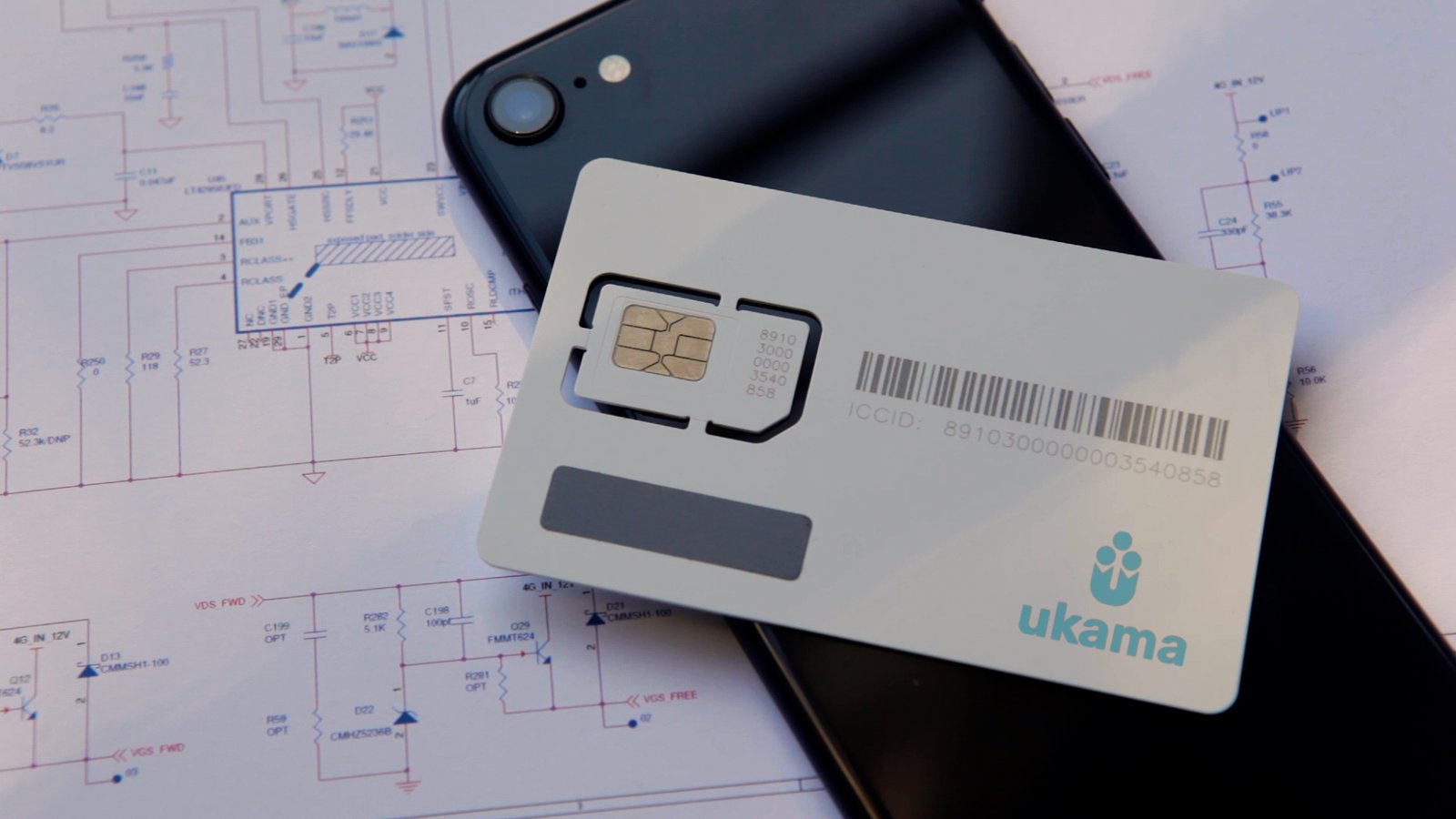
A physical SIM card for connecting your device or phone to your Ukama network (Tower Node or TRX Module), with the option of global data roaming when not within range of your Ukama network. Get this SIM card if you need more SIMs than come with Ukama Tower Node, if you know you want to use a roaming data plan, or if you want to get started with Ukama before your hardware arrives. Data is always free when you are connected to your own Ukama network. When roaming, you will be charged a rate depending on the country - see the "Global Roaming Rates" section for details. SIM cards have roaming disabled by default. Roaming can be enabled for a SIM card via your Ukama console. SIM cards purchased during the campaign and enabled for roaming won't expire as long as they are used at least once per year. You will receive a full-size SIM (1FF) card with pop-out options for mini-, micro-, and nano-SIM (2FF, 3FF, and 4FF) cards that can be inserted into your phone or device. The SIM card comes pre-loaded with your choice of data credit.
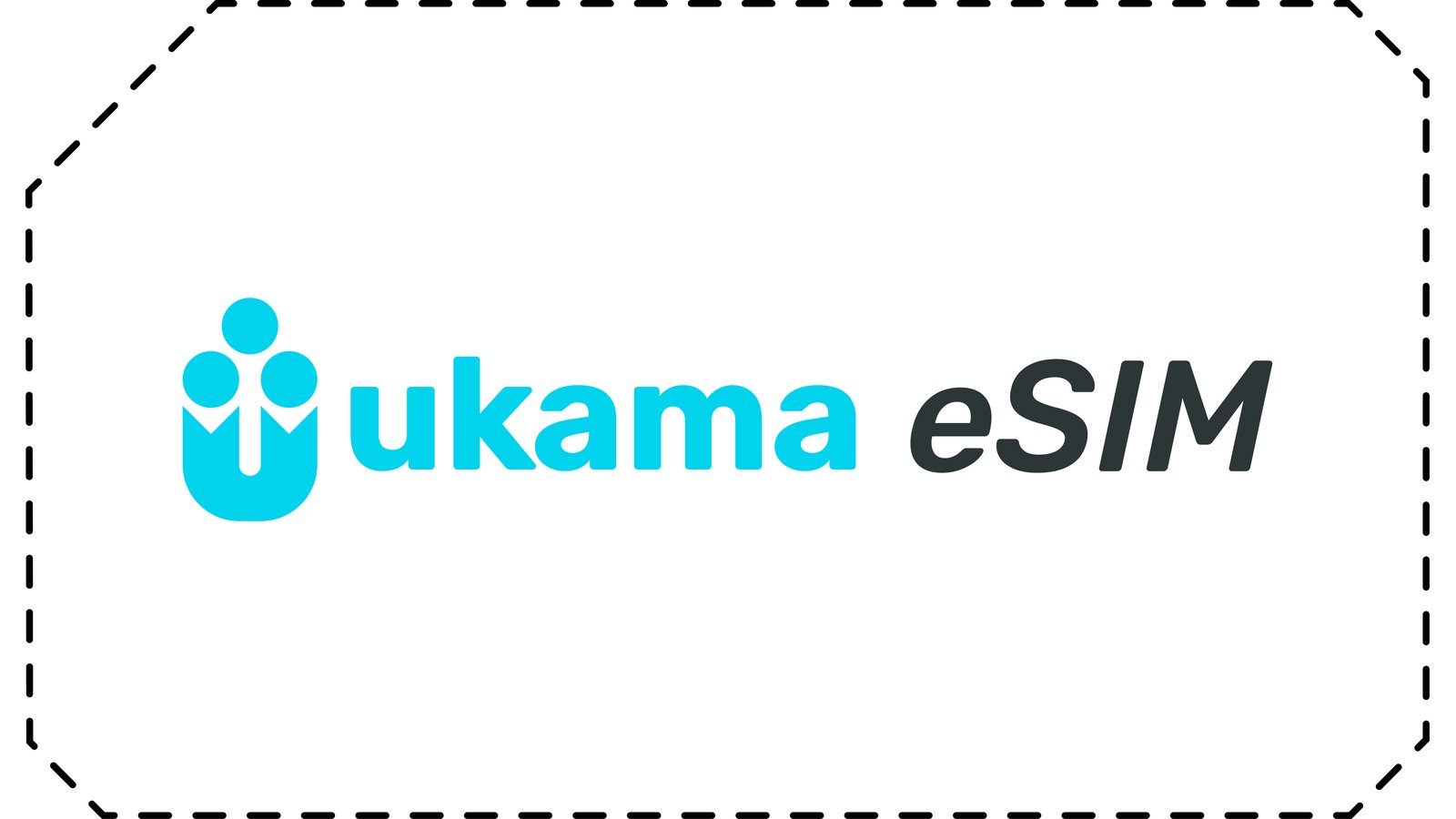
A digital eSIM for connecting your device or phone to your Ukama network (Tower Node or TRX Module), with the option of global data roaming when not within range of your Ukama network. Get this eSIM if you need more SIMs than come with Ukama Tower Node, if you know you want to use a roaming data plan, or if you want to get started with Ukama before your hardware arrives. Data is always free when you are connected to your own Ukama network. When roaming, you will be charged a rate depending on the country - see the "Global Roaming Rates" section for details. eSIMs have roaming disabled by default. Roaming can be enabled for an eSIM via your Ukama console. eSIMs purchased during the campaign and enabled for roaming won't expire as long as they are used at least once per year. You will receive a QR code to activate the eSIM on your phone or device. The eSIM comes pre-loaded with your choice of data credit.
A collection of 100 SIMs (cards or eSIMs) for you to start your own business or provide cellular data service to your user base as a service provider. Just like regular Ukama data SIMs, they are configured to have global data roaming over existing cellular networks. However, unlike the Ukama data SIM, you can define various parameters customers, such as data rates, expiration, billing cycles, and many more parameters through our API. Furthermore, you get 25% off the existing advertised global roaming rates. There is a monthly subscription fee of $249 USD, but the first month's fee is waived. You can purchase more SIMs as you need them.
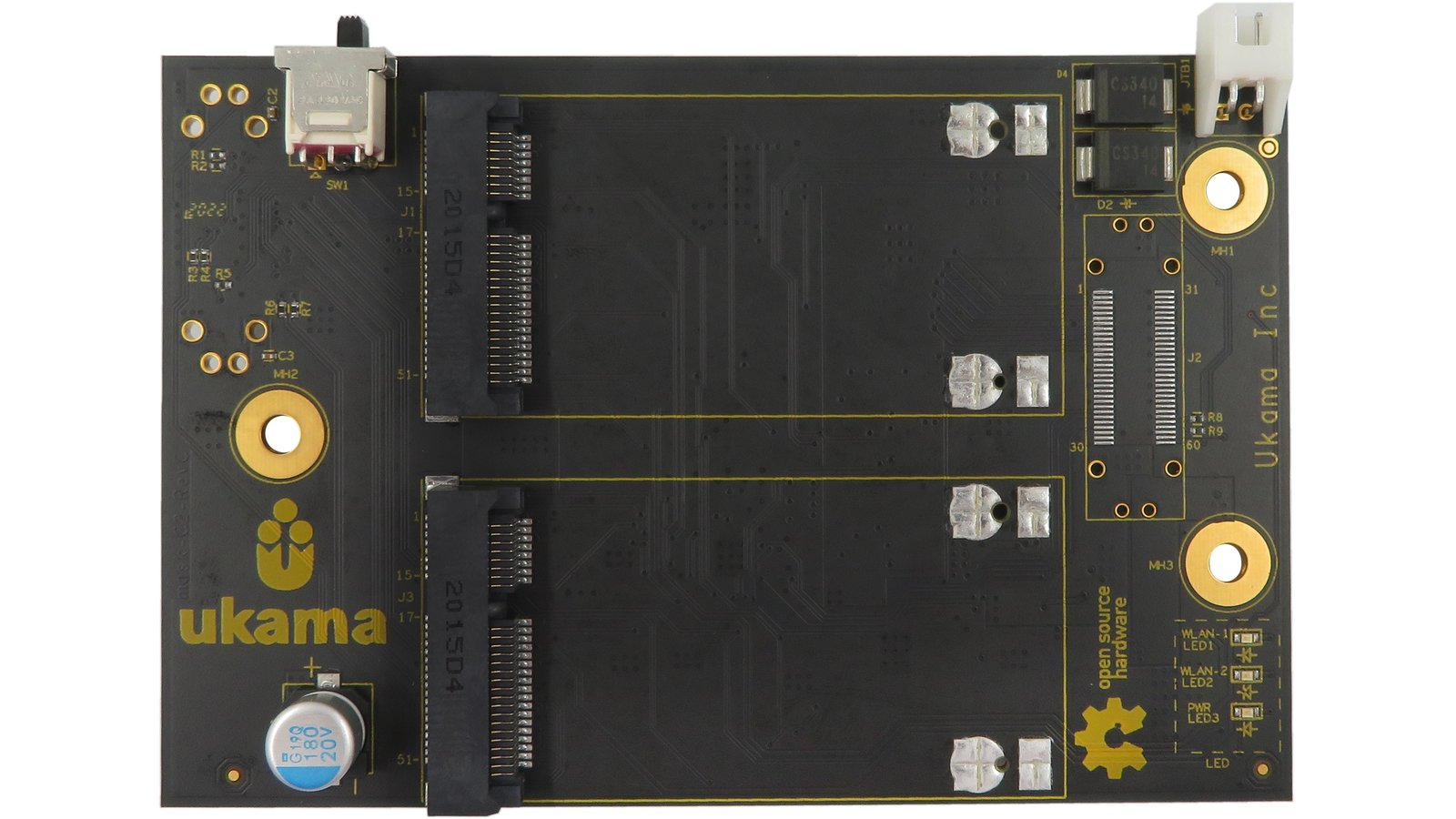
Ukama Tower Node's functionality can be extended by the addition of a "mask" board, for which Ukama Tower Node's enclosure has a dedicate internal slot and two dedicated SMA ports (labeled Ant-1 and Ant-2). Ukama Mini PCIe Extension Module is a mask board with two Mini PCIe slots that expose two PCIe lanes from Ukama Tower Node's general-purpose processing (GPP) module. The Mini PCIe slots can be used to host compatible off-the-shelf or custom PCIe modules, such as Wi-Fi APs, LoraWAN gateways, cellular modules, gigabit Ethernet cards, and ADCs. This product is compatible only with Ukama Tower Node.
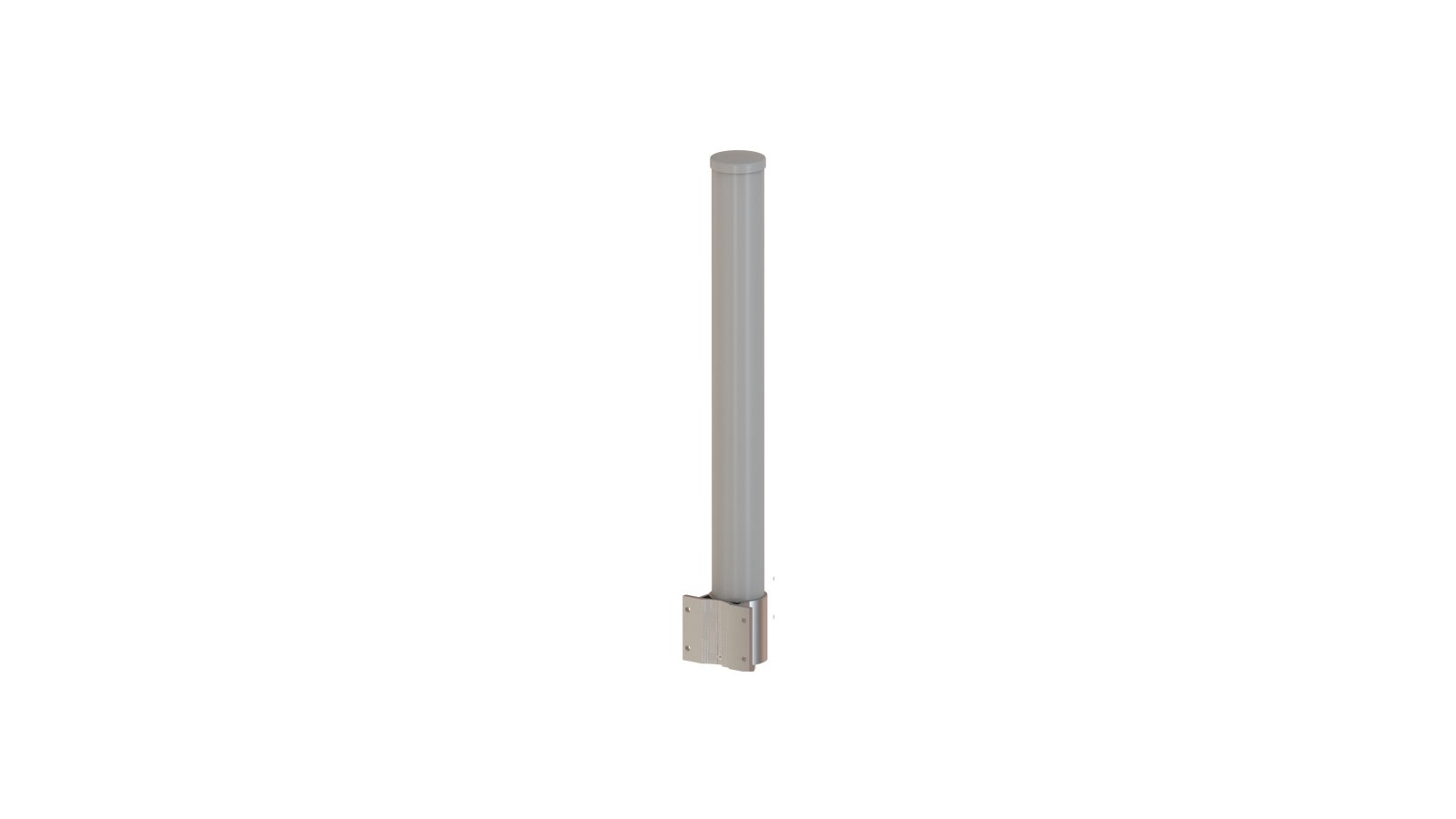
External, high-gain, omnidirectional, 11-13 dBi antenna with a mounting kit for outdoor deployment. For use with Ukama Amplifier Unit - each unit should have one antenna.
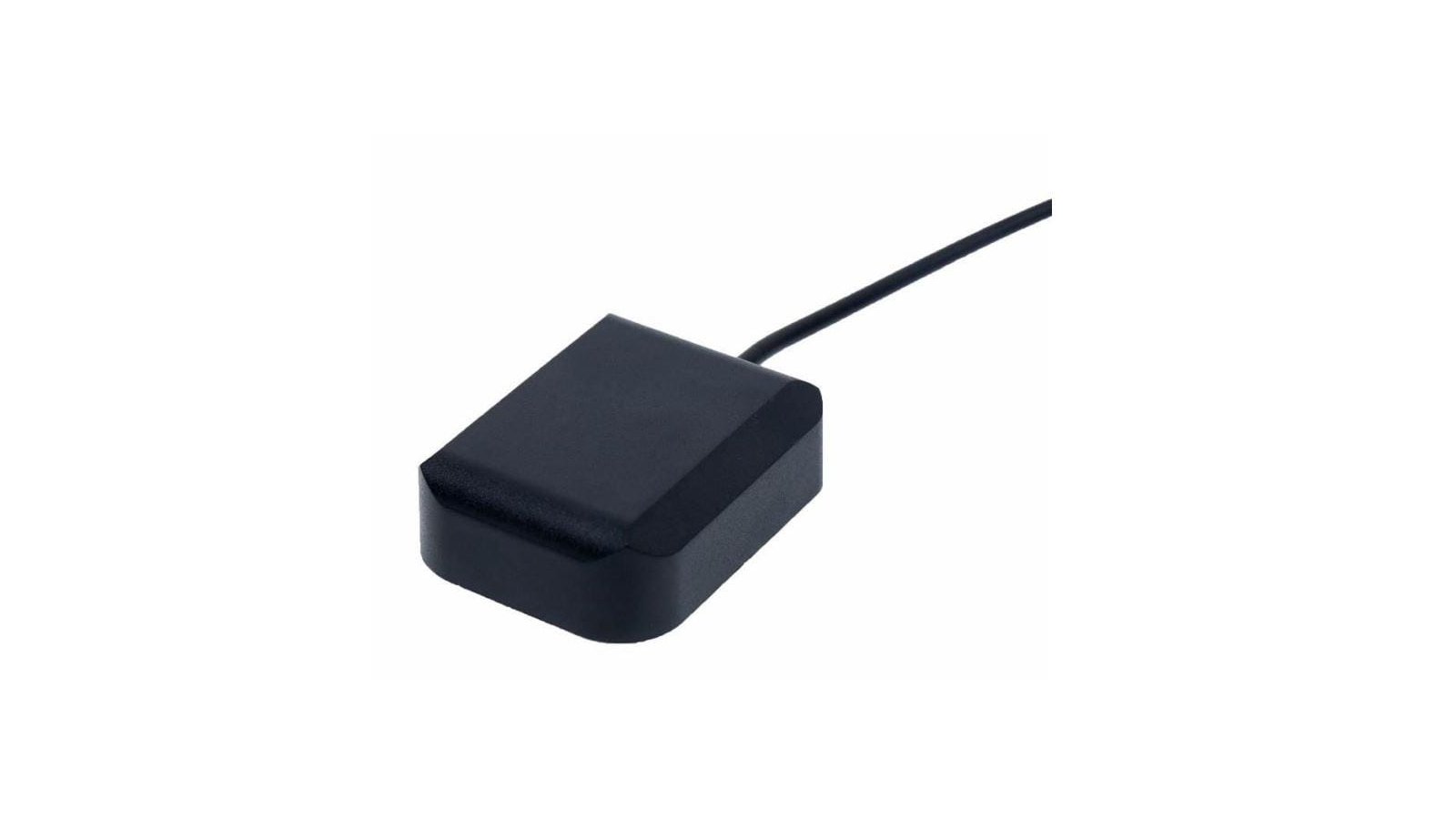
From the Crowd Supply Basics project.
For use with Ukama Tower Node.
A 20 dBb gain antenna suitable for GPS, GNSS, GLONASS, Galileo, and Beidou that has a magnetic mount and 3 m cable with an SMA connector. Manufactured by Pulse, part number GNSSMMSMA.
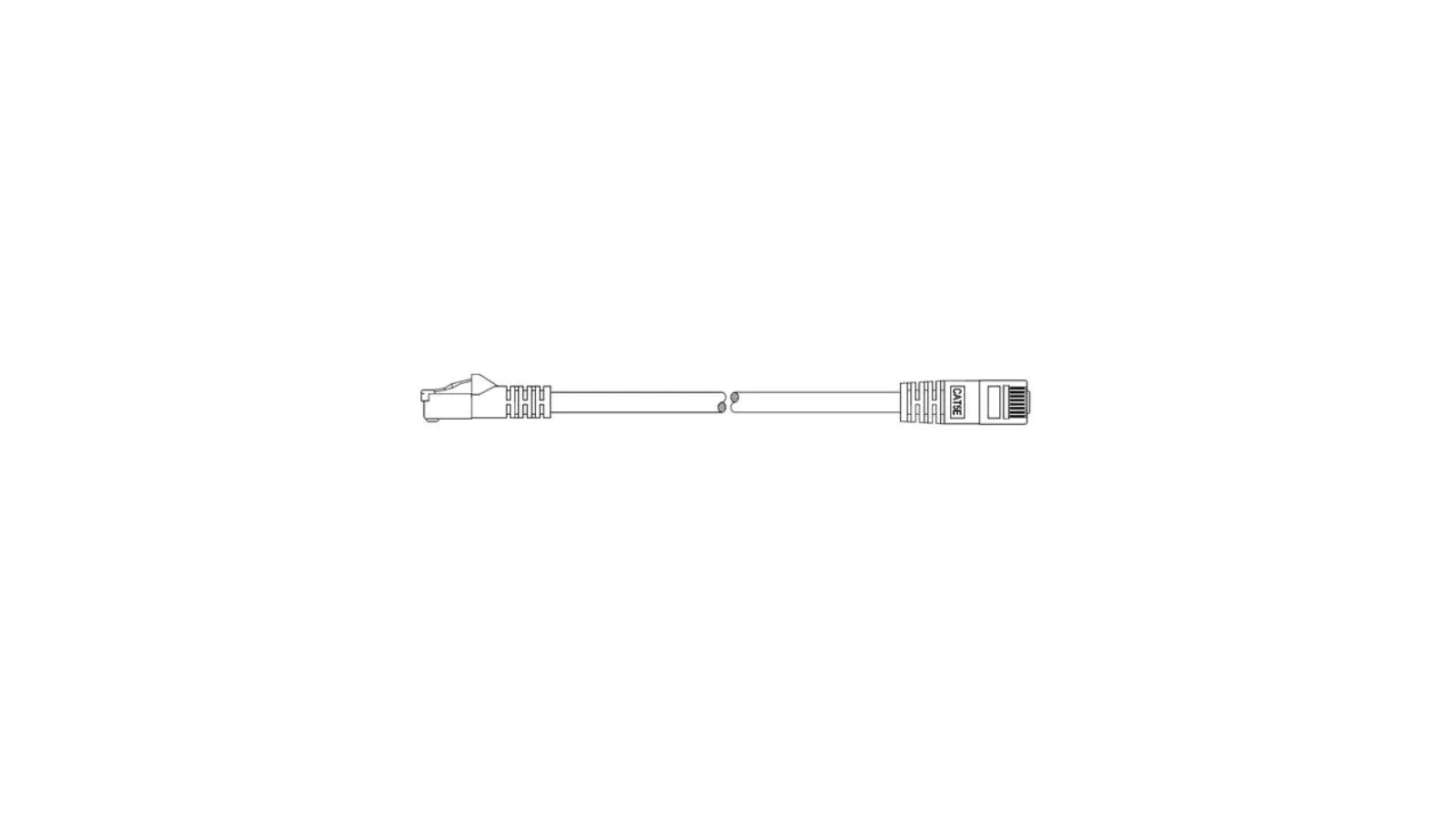
From the Crowd Supply Basics project.
A one-meter CAT5E shielded Ethernet cable with a wire gauge of 24 AWG and RJ45 plugs on both ends.

· ukamaNetworks · ukama · ukama.com
Ukama empowers entrepreneurs, enterprises, communities, and individuals to build their own cellular data networks. Cellular Internet for everyone, everywhere. We are a Y Combinator summer of 2020 (YC'S20) startup based in California with a distributed team based in various locations around the world, including Côte d'Ivoire, Rwanda, India, Pakistan, and the United States.